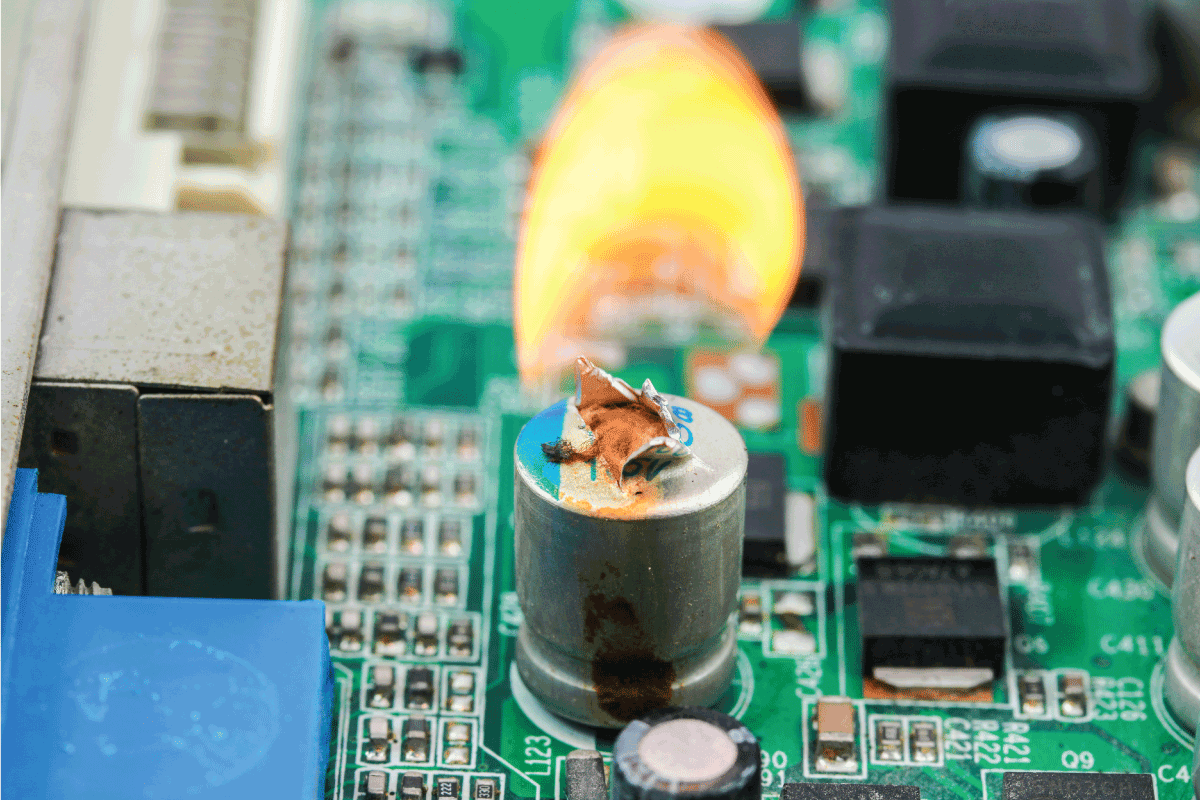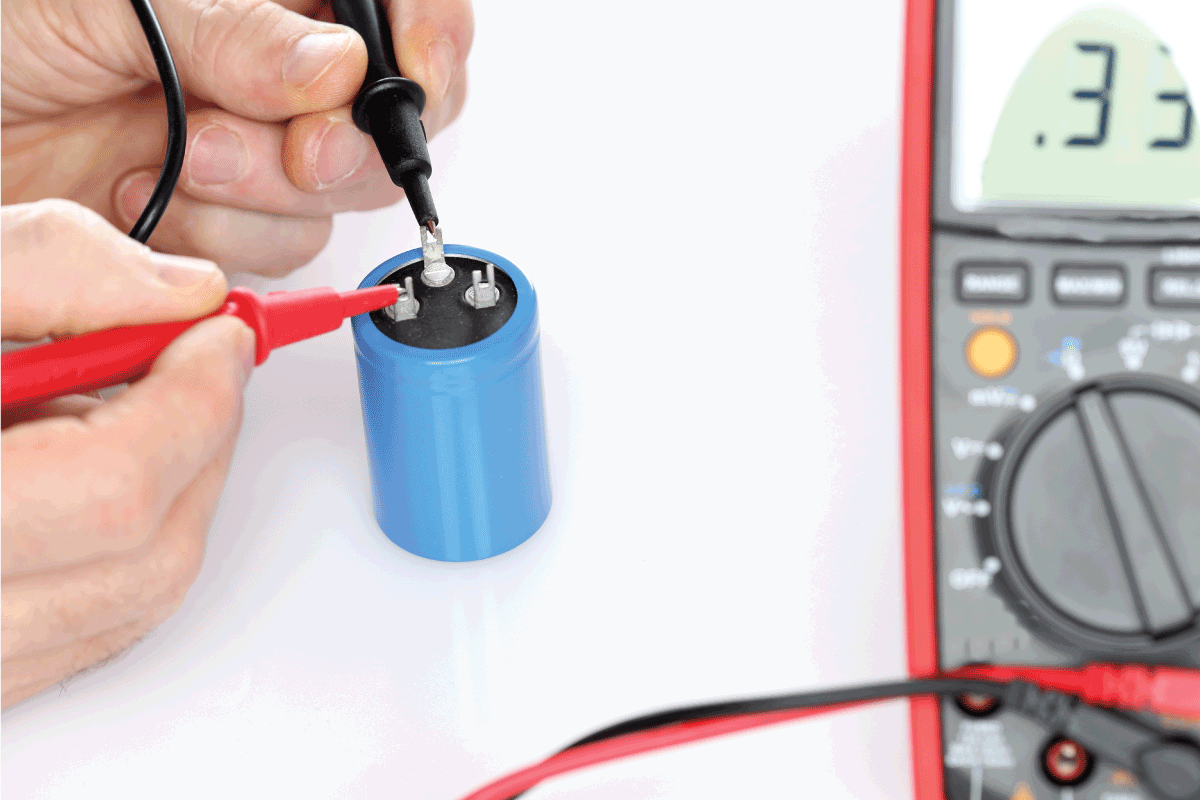The capacitor plays a crucial role in storing and discharging energy in a circuit system. Since it is essential to wire it correctly, you may wonder if it is okay to wire the AC capacitor backward. We researched this concern for you, and we found the answer below.
You can reverse wire the AC (Alternating Current) capacitors into any PCB (Printed Circuit Board) or network. Unlike DC (Direct Current) capacitors, AC capacitors don't have specific wiring requirements.
While the answer is pretty straightforward, keep reading as we also share how to safely discharge your capacitor and wire it. This information will help you to avoid exposing yourself to risks since dealing with capacitors can be deadly. That said, let's discuss!
Do AC Capacitors Have Polarity?
Polarity in AC capacitors indicates whether the capacitors are symmetric or not. Symmetric capacitors typically have two equivalent terminals.
An AC capacitor does not have polarity, unlike DC capacitors. An AC capacitor's main role is to reverse the current as energy flow in the circuit. In simple terms, it can only provide the initial power to a specific circuit.
Does It Matter If I Wire The AC Capacitor In Either Way?
Wiring the AC capacitors either way around is completely fine because they don't have a polarity. Thus, the connection will never cause an issue.
The nature of the AC capacitor is to generate enough voltage when its network switch demands a charge. For example, an AC capacitor delivers electric energy to turn on the air conditioner's motor.
How To Know If You Have AC Or DC Capacitors?
There are many methods to figure out which type of capacitors you have. While it may be obvious for those who have some electrical knowledge and experience, chances are this is not the case for those unfamiliar with these capacitors.

Capacitors have two plates, terminals, or poles. The common distinction between AC and DC capacitors is the marking signs (-) and (+) on each pole. If one doesn't have signs, it is an AC capacitor or non-polar.
How To Discharge Safely The Capacitors?
The safest way of wiring the AC capacitors is to bleed or discharge them before detaching them.
But before you proceed with discharging, ensure to wear or prepare the following things:
- Goggles
- Insulated gloves
- Multimeter tester
- Insulated screwdrivers
![Tools to use to discharge capacitors safely, Can You Wire An AC Capacitor Backwards? [And Should You Do This?]](https://hvacseer.com/wp-content/uploads/2022/11/tools-to-use-to-discharge-capacitors-safely.-Can-You-Wire-An-AC-Capacitor-Backwards-And-Should-You-Do-This-2.png)
Get this reliable multimeter on Amazon.
Follow these steps to begin discharging your capacitor correctly and safely:
- First, shut off the power supply in your capacitor along its circuit.
- Locate the AC capacitors. Remember that they don't have negative or positive signs.
- Flip over the PCB where your capacitor attaches to gain better access to its plates.
- Securely connect the resistive load probes to the capacitor's poles.
- Allow the capacitor to drain or discharge its energy for at least three to five seconds.
- Set your multimeter to its highest tester setting.
- Hook up the multimeter test probes to your capacitor's two terminals.
- The resulting reading on the multimeter screen should be zero voltage or close to that. Otherwise, the capacitor is not fully drained and needs more time to drain.
CAUTION! Please be careful when carrying out these steps, as this process is very dangerous!
You can also follow this capacitor discharging visual demonstration:
How To Replace And Wire Correctly The Air Conditioner's Capacitor?
Wiring your capacitor from any circuit distribution source or PCB is not simple. We highly suggest calling a certified electrician to do it for you to ensure your safety and prevent unnecessary property damage.

If you still want to wire the air conditioning motor capacitor, here's how to proceed.
Begin by buying a new identical model or compatible capacitor size for your air conditioning motor, then follow the steps below. Remember to wear protective gear.
- Unplug the system's power cord or switch OFF its breaker.
- Find the capacitor.
- Assess whether the capacitor is fully discharged, then pull it out.
- Please take a note or picture of the pattern of the old wires before pulling them out to guide you through wiring in the new capacitor.
- Securely insert your new capacitor and use your note as a reference to ensure that you set all wires correctly.
- Plug in the air conditioner's power cord or switch ON its breaker.
- Test the air conditioner's motor to check if you've wired it accordingly.
What Happens If You Wire The Capacitor Incorrectly?
The capacitor is a small electronic device having two conducting plates set in place between insulators. It stores energy and discharges it as the frequency rate changes. This requires a proper connection between sources to effectively pass or deliver the voltage needed to start a circuit.
AC capacitors don't have complex wiring specifications. So, you cannot wire an AC capacitor incorrectly. However, for DC capacitors, improper wirings can lead to unwanted outcomes such as igniting a fire or exploding.
Both AC and DC capacitors have a dielectric insulating material. It protects the capacitor's body when voltage applies to the capacitor. Its three common functions are:
- To protect the capacitors conducting plates from touching one another.
- Serves to increase operational workload. Thus, electric pressure will lessen and keep the current flowing at a lower rate.
- Acts as a safety measure to avoid dielectric failure or short-circuiting.
How To Determine Whether The Capacitor Is Working Properly Or Not?

The easiest way to evaluate your capacitor's functionality is to charge it. This requires applying a DC voltage to the capacitor leads and charging the capacitor with DC voltage.
The charge voltage outcome should be equal to the volts of its sources. For instance, a nine-volt battery will charge your capacitor with nine volts.
Securely connect negative and positive capacitor terminals to the battery's contacts using electrical tape. Then immediately after charging it disconnect the battery.
Use a multimeter to read its voltage rate. Ensure to attach the multimeter's two probes to the capacitor terminals. Doing so will help determine whether the capacitors are operating correctly or not.
The capacitor is defective if you get a reading far from that of your DC power source.
Do Capacitors Shock You?
![Electronic components on a printed circuit board, Can You Wire An AC Capacitor Backwards? [And Should You Do This]](https://hvacseer.com/wp-content/uploads/2022/11/Electronic-components-on-a-printed-circuit-board.-Resistor-inductor-and-capacitor-on-PCB.-Can-You-Wire-An-AC-Capacitor-Backwards.png)
An AC or DC capacitor can shock you if it is active or has a charge inside it, especially during wiring installation or conducting wiring maintenance.
This information is critical if you intend to use spare capacitors from other circuits or networks - we know it is tempting to utilize them temporarily when you cannot buy new ones.
Wire the capacitors to ideal plates or terminals. You must also ensure to discharge them before switching and wiring them into the circuit where you'd want to use them.
There are reports about an incident involving one casualty resulting from improper handling of active capacitors. As mentioned early on, capacitors get the energy from a power network and store it to discharge it later.
Some capacitors can store up to five kilovolts from their power network, translating to 200 milliamps (mA) of energy when it releases those charges. This immense power can kill you. So be extra cautious when wiring or conducting maintenance to your AC capacitors.
To Wrap Things Up
Wiring an AC capacitor backward is not an issue since it doesn't have an explicit polarity rate. Therefore, this capacitor is ideal for starting up a circuit or system motor components.
This post provides relevant information to help you stay safe when working on projects requiring handling capacitors. Kindly adhere to the guidelines to ensure your safety and project quality.
For more capacitor queries, please read the following article:

